In Images: Digging Up a Swimming Dinosaur Called Spinosaurus
Digging up a Spinosaurus
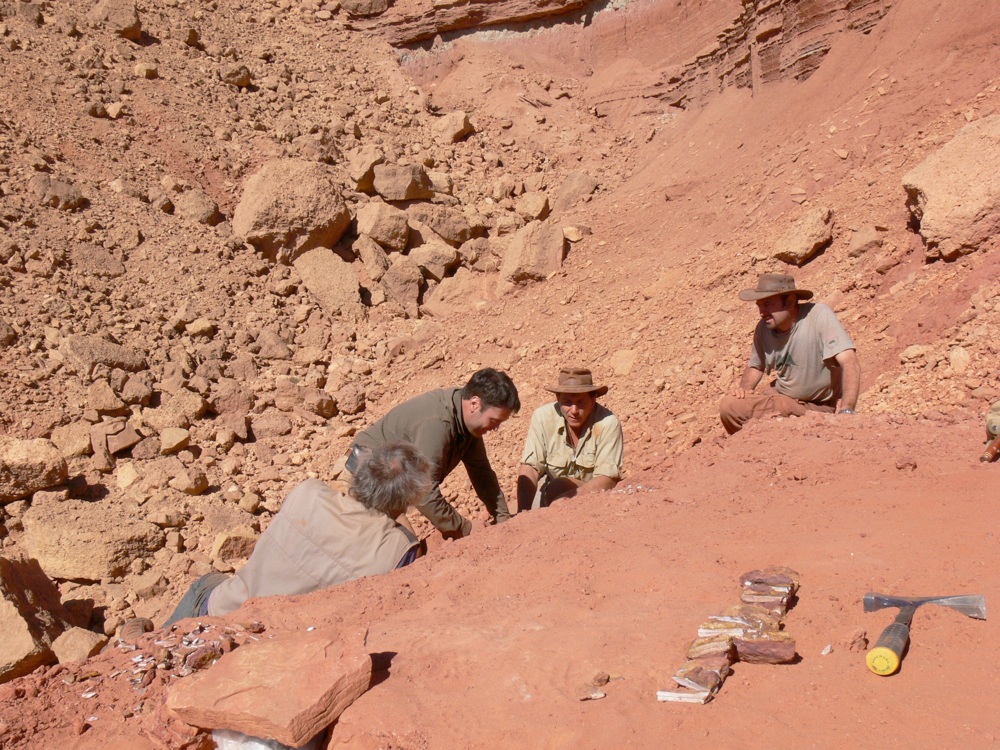
In the Kem Kem beds of eastern Morocco, Nizar Ibrahim, a vertebrate paleontologist at the University of Chicago, and colleagues discovered what ended up being a partial skeleton of the dinosaur Spinosaurus aegyptiacus. An analysis of the bones revealed the beast was adapted to an aquatic lifestyle.
Here, paleontologists David Martill, Ibrahim, Paul Sereno and Cristiano Dal Sasso at the field site in eastern Morocco, from left to right), with a partial spine of Spinosaurus in the foreground. [Read full story]
Kem Kem Beds
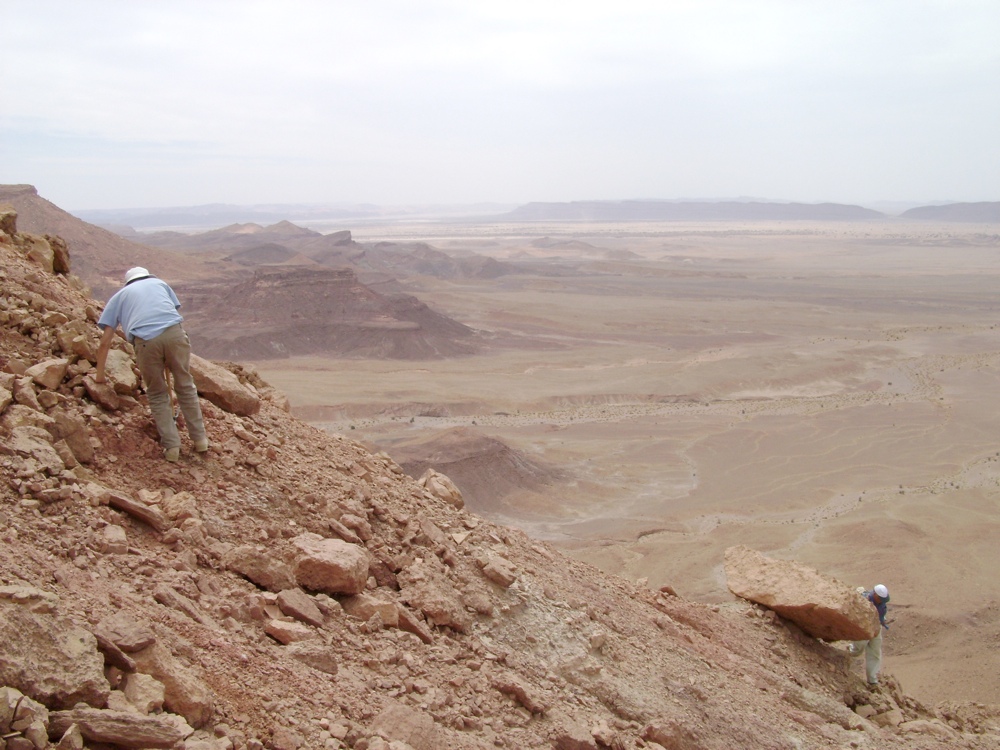
Paleontologists taking part in anexpedition led by Nizar Ibrahim scour the Cretaceous rocks ofthe Kem Kem region of southeastern Morocco, where the partial skeleton of Spinosaurus wasfound. [Read full story]
Spinosaurus spine
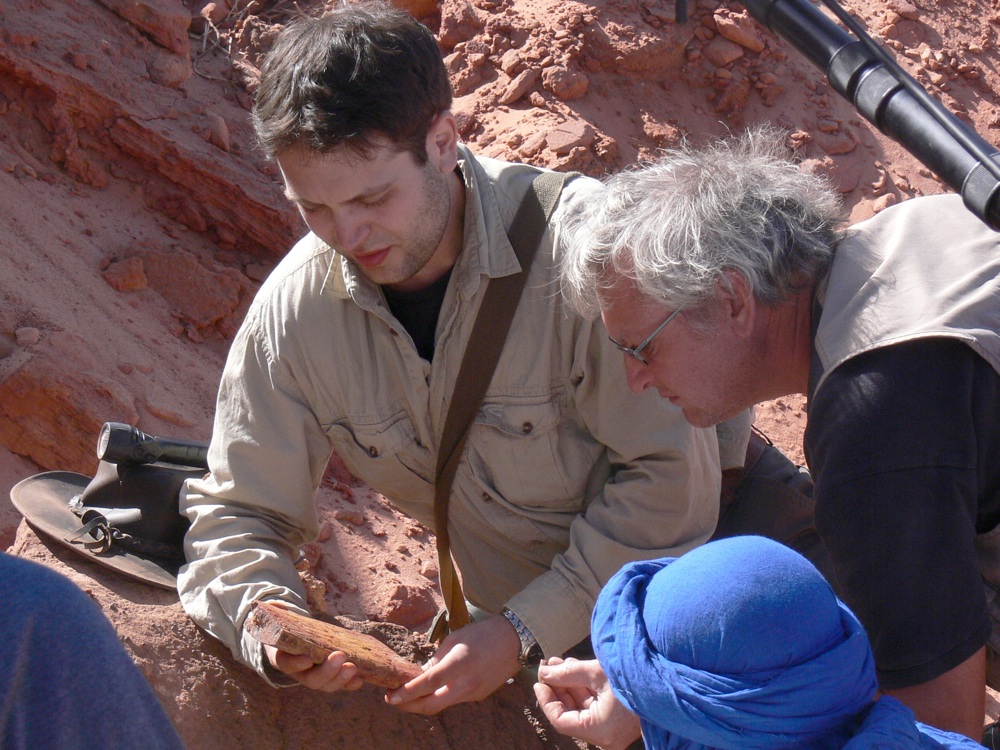
Paleontologists Nizar Ibrahim and David Martill examine a spine fragment of Spinosaurus found in southeastern Morocco. [Read full story]
Morocco
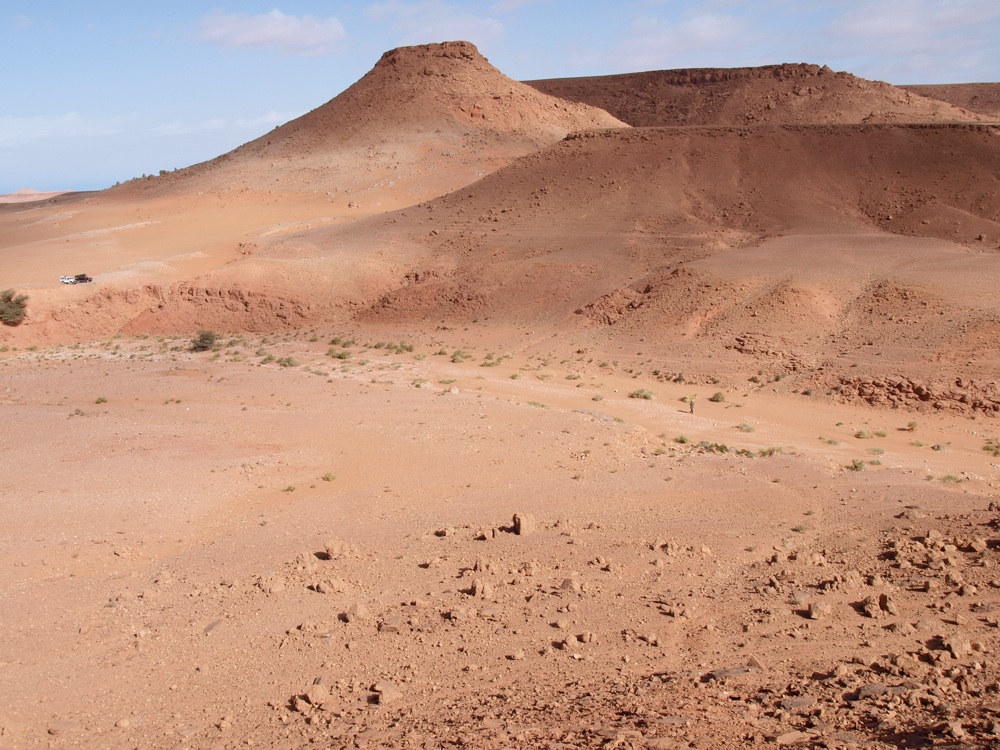
The Kem Kem region of southeastern Morocco where a partial skeleton of the dinosaur Spinosaurus aegyptiacus was discovered. [Read full story]
Spinosaurus aegyptiacus

Spinosaurus was larger than all other carnivorous dinosaurs, including the tyrannical T. rex, and on its back it sported a sail of fleshy spines taller than a grown man. Remains of Spinosaurus aegyptiacus had been found in Egypt and Morocco dating to the Upper Cretaceous Period.
Spinosaurus

German paleontologist named Ernst Stromer first described Spinosaurus in 1915 after finding some of the beast's bones, including backbones with lengthy spines, in Egypt. In April 1944, his entire collection, including Spinosaurus, was destroyed in an Allied Royal Air Force bombing of Munich.
Spinosaurus skeleton
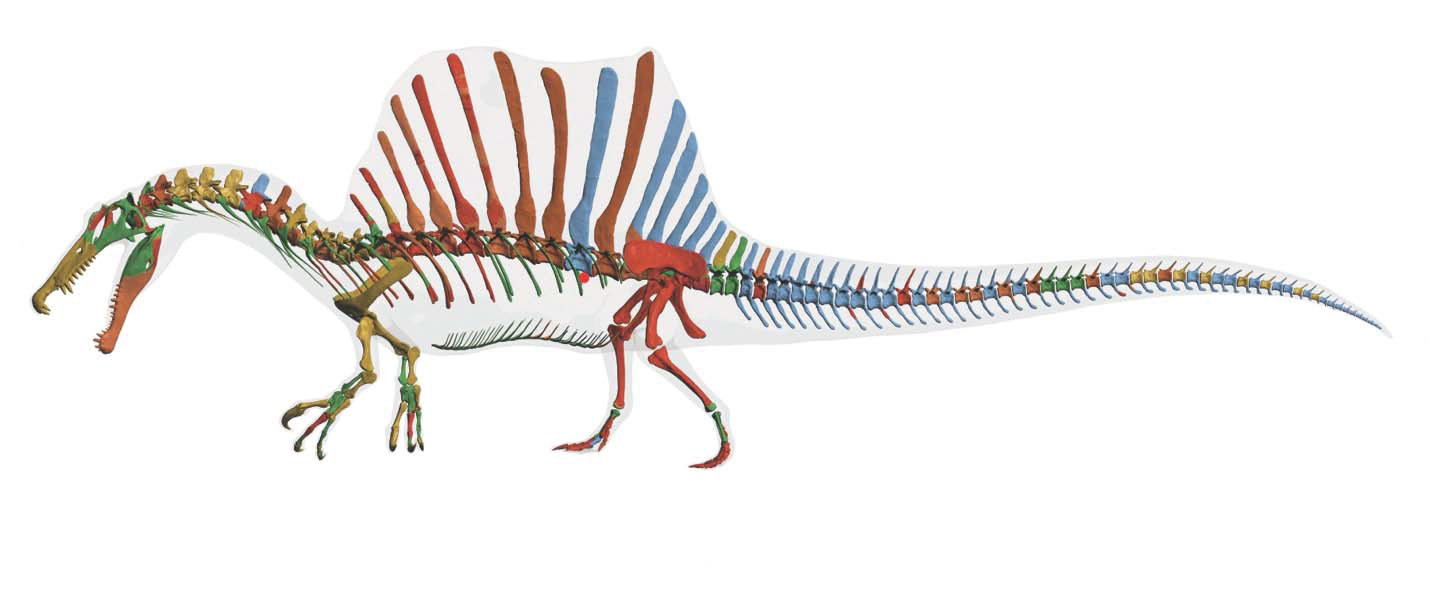
Combining the newfound bones with Stromer's drawings and other Spinosaurus bones from museums around the world, Ibrahim and colleagues created a digital model of the animal's skeleton and its transparent flesh outline. Color codes are used to show the origin of different parts of the digital skeletal model. [Read full story]
Sign up for the Live Science daily newsletter now
Get the world’s most fascinating discoveries delivered straight to your inbox.
Built to swim
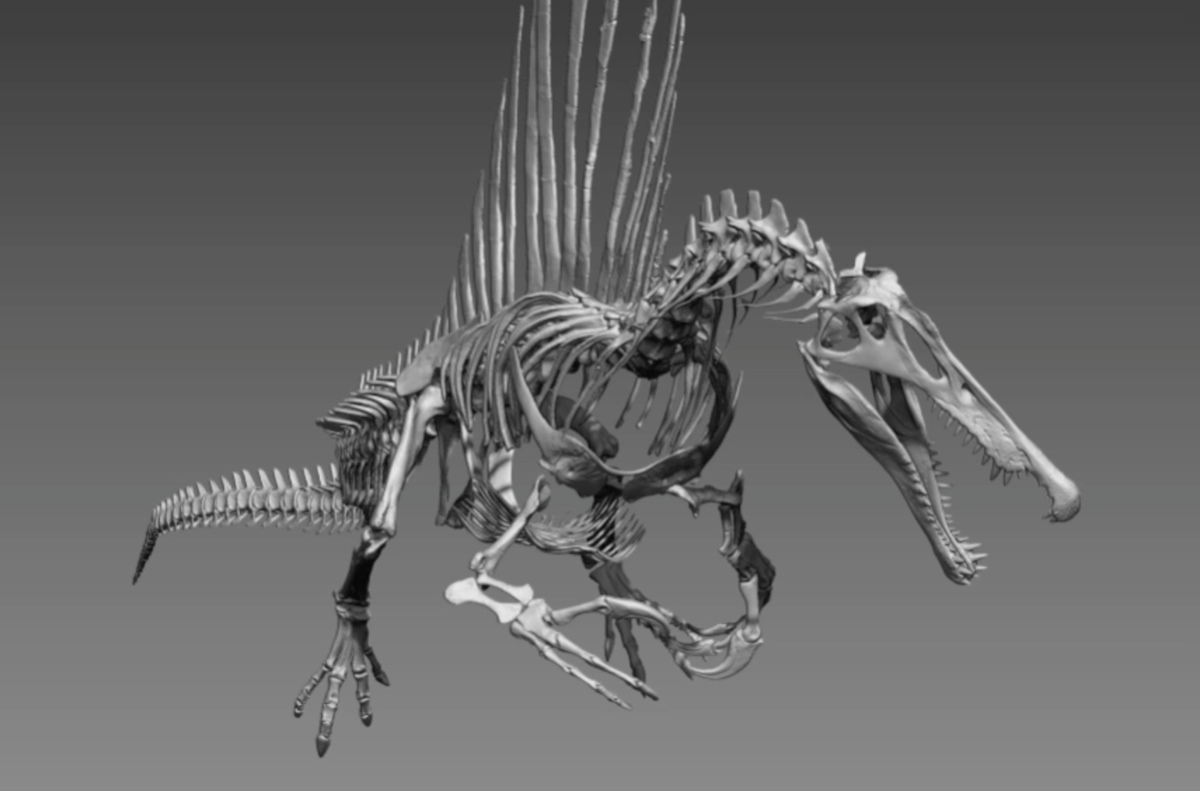
Based on the skeleton (reconstruction, shown here), researchers think Spinosaurus aegyptiacus would have sliced through the water in a river system in what is now Africa, snatching fish in its cone-shaped interlocking teeth.
Spinosaurus skull
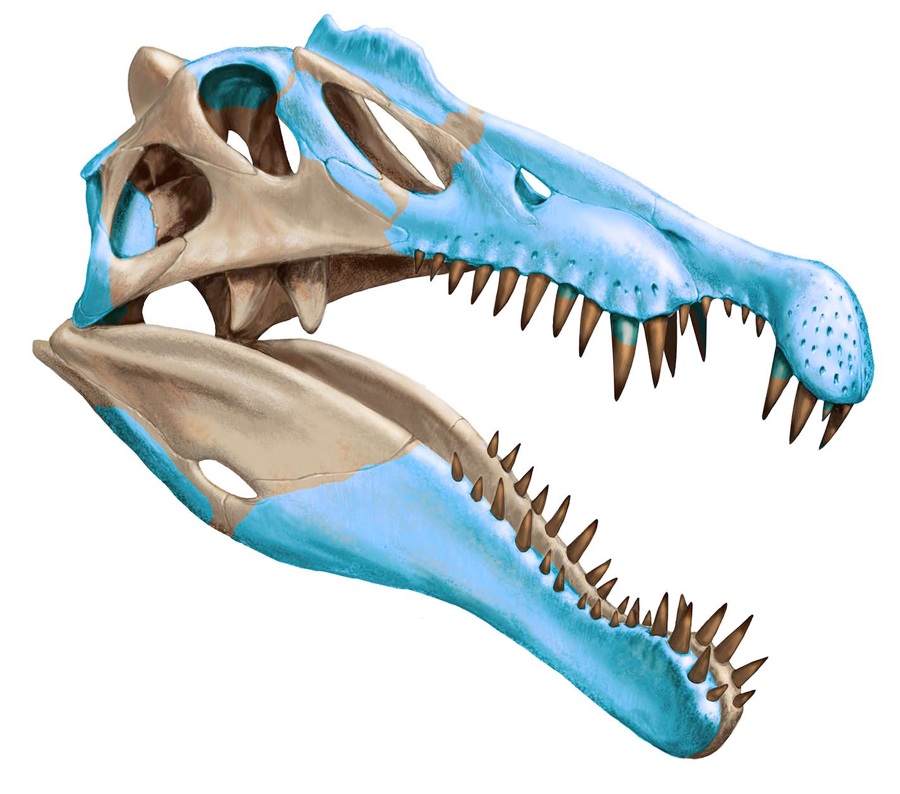
Skull reconstruction of Spinosaurus aegyptiacus showing discovered bones. Skull bones that are known in S. aegyptiacus are shown in blue. [Read full story]
Spinosaurus Skeletal Reconstruction

Artwork by Scott Hartman reveals the bone structure of Spinosaurus.
Jeanna Bryner is managing editor of Scientific American. Previously she was editor in chief of Live Science and, prior to that, an editor at Scholastic's Science World magazine. Bryner has an English degree from Salisbury University, a master's degree in biogeochemistry and environmental sciences from the University of Maryland and a graduate science journalism degree from New York University. She has worked as a biologist in Florida, where she monitored wetlands and did field surveys for endangered species, including the gorgeous Florida Scrub Jay. She also received an ocean sciences journalism fellowship from the Woods Hole Oceanographic Institution. She is a firm believer that science is for everyone and that just about everything can be viewed through the lens of science.










